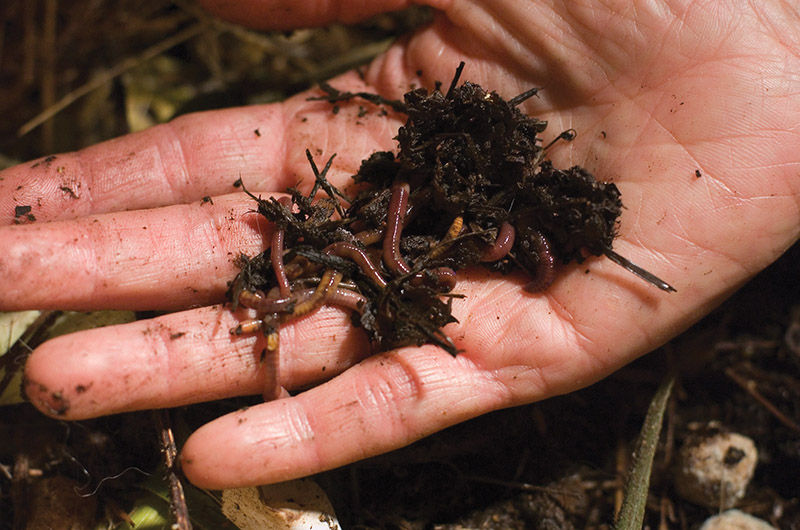Active red worms: Transform waste
Active red worms: Transform waste
Blog Article
Obtain the Most Out of Your Compost With Red Wigglers
The integration of red wigglers right into your composting system can significantly enhance the performance and efficiency of waste monitoring methods. These worms are not just skilled at breaking down natural materials however also contribute to the development of high-quality garden compost that enriches dirt health.
Recognizing Red Wigglers
Understanding red wigglers is necessary for anybody thinking about vermicomposting, as these worms play a critical duty in breaking down raw material. Scientifically understood as Eisenia fetida, red wigglers are identified by their reddish-brown shade and slender bodies, generally measuring between 3 to 4 inches in size. Unlike earthworms, which grow in soil, red wigglers prefer a damp, organic-rich setting, making them suitable for composting systems.
These worms are renowned for their voracious cravings, eating half their body weight in natural product daily. This capacity enables them to quickly decompose kitchen scraps, lawn waste, and various other naturally degradable products, changing them right into nutrient-rich compost. Red wigglers flourish in temperature levels varying from 55 ° F to 77 ° F, demanding careful surveillance of their atmosphere to ensure optimal activity.
In addition, red wigglers recreate quickly, doubling their population around every 3 to 4 weeks under excellent problems. This rapid reproduction is vital for maintaining a reliable composting operation. red wigglers. Recognizing their biology and habits is vital for any person wanting to harness their capacity in lasting waste management methods
Benefits of Vermicomposting
Vermicomposting deals many benefits that expand past easy waste decrease. This ingenious method leverages the natural disintegration abilities of red wigglers to change natural waste into nutrient-rich garden compost, improving soil wellness and fertility. The resulting vermicompost is including helpful microbes, which can enhance soil framework and increase vitamins and mineral availability for plants.

Additionally, vermicomposting can be exercised in numerous settings, making it obtainable for metropolitan residents and those with restricted exterior space. It requires minimal investment and can be conveniently managed inside or outdoors, making it suitable for different way of livings.
Using vermicompost also promotes much healthier plant growth by enhancing microbial activity, enhancing water retention, and giving necessary nutrients. Gardeners and farmers who include vermicompost into their techniques often observe enhanced crop returns, making vermicomposting a sustainable choice for both waste monitoring and agricultural productivity.
Establishing Up Your Worm Bin
Developing an effective worm bin is crucial for effective vermicomposting, and with simply a couple of key elements, anybody can establish an effective system. Begin with an ideal container; a plastic or wood container with a cover works well. Preferably, the my sources container must be in between 10 to 18 inches deep to provide adequate area for the worms to grow.
Make sure proper ventilation by drilling tiny holes in the sides and cover, enabling airflow while retaining wetness. Preserve a balance between dampness and drain; the container needs to perspire yet not saturated. A layer of bed linen, such as shredded paper or cardboard, provides a habitat for the worms and help in wetness retention.
Consider the location of your worm container. A temperature level variety of 55 to 77 levels Fahrenheit is excellent, so maintaining the container indoors or in a shaded outdoor area can aid maintain regular problems. Consistently check the bin for odors, which indicate an imbalance, and readjust dampness levels as needed. By complying with these standards, you will certainly create a conducive environment for red wigglers, laying the groundwork for a successful vermicomposting endeavor.
Feeding Your Red Wigglers

Avoid feeding them meat, dairy products, and oily foods, as these can bring in insects and develop undesirable smells. In addition, it is crucial to chop or shred larger items to help with quicker decomposition, ensuring your worms can access the nutrients much more successfully.
Small amounts is crucial; overfeeding can result in anaerobic conditions, harming the worms and reducing the composting procedure. Monitor the container for leftover food and change your feeding routine appropriately. A general regulation is to give concerning half a pound of food per pound of worms per week.
Finally, preserving wetness is vital. Purpose for a wet, but not soggy, setting, as wetness aids in the malfunction of food and sustains worm activity. By carefully handling their diet regimen, you can improve the performance of your red wigglers in changing natural waste right into rich compost.
(buy red wiggler worms)
Harvesting and Making Use Of Garden Compost
After several weeks of thorough composting, you will discover that the rich, dark compound generated by your red wigglers awaits harvest. This nutrient-dense worm castings, often described as vermicompost, can substantially boost soil health and wellness and plant development. To harvest, carefully separate the finished compost from the staying bedding and worms. One reliable method is to utilize a light; red wigglers are delicate to light and will certainly tunnel much deeper into the material, allowing you to scoop out the top layer of compost.
Once collected, the garden compost can be utilized in various applications. Mix it right into garden dirt to boost framework and fertility, or use it as a top dressing for potted plants.
Keep in mind to store any unused compost in a cool, completely dry location to maintain its top quality. By successfully harvesting and using the compost created by red wigglers, you not just improve your garden but likewise advertise sustainable horticulture methods.
Final Thought
Incorporating red wigglers right into composting methods considerably enhances the performance of natural waste improvement. Inevitably, the assimilation of red wigglers in composting contributes to sustainable horticulture, decreases landfill waste, and advertises ecological stewardship with efficient source recycling.
Report this page